Big reveal: Serpentine Pavilion and four Summer House designs unveiled

Earlier this month, news of the expanded Serpentine Pavilion sent ripples of excitement through the capital, and now we've been granted a first look at the main pavilion and accompanying four Summer Houses taking shape this summer.
The main event, Bjarke Ingels Group's (BIG) pavilion, 'embodies multiple aspects that are often perceived as opposites: a structure that is free-form yet rigorous, modular yet sculptural, both transparent and opaque, both solid box and blob', explains the practice. An 'unzipped wall' transforms from a straight line into a three-dimensional space, creating a dramatic structure with multiple uses.
The Summer Houses, although smaller in scale, are by no means simpler constructions. Kunlé Adeyemi’s design pays tribute to the historic Queen Caroline's Temple – a summer house built close to the then recently created Serpentine in 1734, attributed to William Kent– with a clever inverse replica. Prefabricated sandstone building blocks will create abstracted forms to create a room, a doorway and a window, exposing the structure’s neo-classical plan, proportions and architectural form in a playful manner.
Also paying tribute to the Temple, but concentrating more on the dialogue between it and its surrounding scenery, Asif Khan's Summer House will revive a picturesque moment from 300 years ago though polished metal surfaces and undulating timber staves. 'Through sun path analysis I realised that Kent aligned the temple toward the direction of the rising sun on 1st March 1683, Queen Caroline’s birthday,' explains Khan; an effect that would have been amplified by the reflection off the lake at the time, although now obscured by John Rennie’s 1826 bridge.
Taking inspiration from another lost moment in time, Barkow Leibinger's design is modelled on a now extinct, hill-top pavilion also created by William Kent. 'We have designed a Summer House in-the-round, conceived as a series of undulating structural bands,' explains the Berlin-based practice. 'The logic of generating a structure from loops is a self-generating one and comes from the idea of coiling material in your hands then stacking the coils upon each other.'
The fourth and final Summer House takes a more conceptual approach, building upon Yona Friedman's 1950's project 'La Ville Spatiale'. 'The manifesto for this project was based on two pillars or principles,' explains the Hungarian-born French architect. 'Firstly, a mobile architecture that could create an elevated city space and enable the growth of cities while restraining the use of land; secondly, the use of modular structures to allow people to live in housing of their own design.' Using a 'space-chain' conceived for that project, her Serpentine Summer House will be a modular structure of rings.
Engineering and all technical services will be jointly provided by AKT11 and AECOM, with the pavilions due to be unveiled on 10 June.
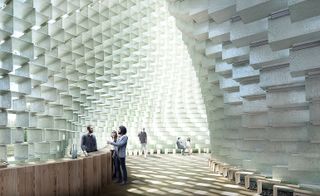
BIG's pavilion 'embodies multiple aspects that are often perceived as opposites: a structure that is free-form yet rigorous, modular yet sculptural, both transparent and opaque, both solid box and blob', explains the practice. Pictured: a render of the interior of BIG's pavilion design.
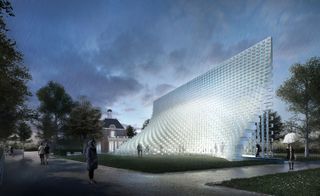
An ’unzipped wall’ transforms from a straight line into a three-dimensional space, lighting up from within.
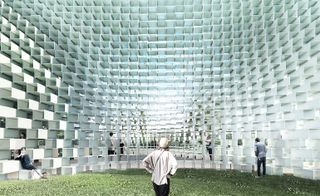
The dramatic structure will house a café by day and host the Serpentine’s acclaimed Park Nights programme of performative works by artists, writers and musicians.
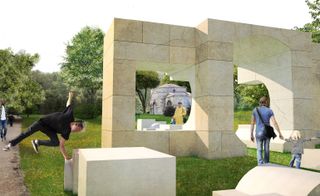
Kunlé Adeyemi's design – shown here as a render – aims 'to fulfil the simple primary purpose of a Summer House: a space for shelter and relaxation'.

An architectural model of Asif Khan's Serpentine Summer House 2016 design.
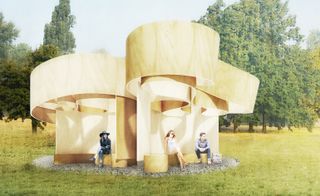
Barkow Leibinger's Summer House will stand free with all its sides visible, conceived as a series of undulating structural bands.

Yona Friedman's modular structure can be disassembled and assembled in different formations and compositions.

Three of the Serpentine Summer House designs pay tribute to William Kent's Queen Caroline's Temple, pictured here.
ADDRESS
Serpentine Gallery
Kensington Gardens
London, W2 3XA
Wallpaper* Newsletter
Receive our daily digest of inspiration, escapism and design stories from around the world direct to your inbox
-
 Enjoy ocean and jungle bliss at Bespoke Tulum’s residences in Mexico
Enjoy ocean and jungle bliss at Bespoke Tulum’s residences in MexicoBespoke Tulum is an exclusive hospitality complex designed by Muro Rojo Arquitectura on Mexico’s Caribbean coastline
By Sofia de la Cruz Published
-
 In Van Cleef & Arpels’ high jewellery, the archival meets the au courant
In Van Cleef & Arpels’ high jewellery, the archival meets the au courantVan Cleef & Arpels pays tribute to its rich heritage with a captivating high jewellery collection
By Hannah Silver Published
-
 New Nothing Ear and Ear (a) earbuds: audio innovation with a retro nod
New Nothing Ear and Ear (a) earbuds: audio innovation with a retro nodNothing’s new Ear and Ear (a) earbuds, drawing inspiration from vintage portable hi-fi and packed with updates, help the company maintain its status as an audio innovator
By Jonathan Bell Published
-
 Tomás Saraceno’s spider-led show at Serpentine has legs, and lots of them
Tomás Saraceno’s spider-led show at Serpentine has legs, and lots of them‘Web(s) of Life’, the first major UK show by Tomás Saraceno, is a living, collaborative and multi-species call to climate action involving everything from dog-friendly sculptures to ‘spider diviners’ – but no phones allowed
By Harriet Lloyd-Smith Published
-
 Steve McQueen to screen his harrowing film 'Grenfell' at London’s Serpentine
Steve McQueen to screen his harrowing film 'Grenfell' at London’s SerpentineAcclaimed film director and artist Steve McQueen will screen his film, Grenfell, at London’s Serpentine South gallery (7 April-10 May 2023), six years after the Grenfell Tower block blaze killed 72
By Harriet Lloyd-Smith Published
-
 Barbara Chase-Riboud at Serpentine: alternative monuments, parallel histories
Barbara Chase-Riboud at Serpentine: alternative monuments, parallel histories‘Infinite Folds’ at Serpentine North Gallery celebrates Barbara Chase-Riboud, the American artist, novelist and poet who has spent more than seven decades pondering history, memory, and the public monument
By MZ Adnan Last updated
-
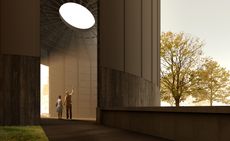 Theaster Gates’ design for Serpentine Pavilion 2022 revealed
Theaster Gates’ design for Serpentine Pavilion 2022 revealedThe American artist and urban planner reveals his plans for the Serpentine Pavilion 2022. Black Chapel has spirituality, music and community at its heart
By TF Chan Last updated
-
Tom Hingston on designing for Serpentine Galleries, the V&A, and Wallpaper*
London-based art director and graphic designer Tom Hingston discusses his visual identities for Serpentine Galleries
By TF Chan Last updated
-
 140 artists on saving Planet Earth
140 artists on saving Planet EarthIn the book 140 Artists’ Ideas for Planet Earth, Serpentine Galleries’ Hans Ulrich Obrist and Kostas Stasinopoulos, alongside leading artists offer innovative solutions to the climate crisis
By Nuray Bulbul Last updated
-
 Counterspace's Sumayya Vally on her Serpentine Pavilion
Counterspace's Sumayya Vally on her Serpentine PavilionCounterspace is the fast-emerging South African architectural practice commissioned to create the latest Serpentine Pavilion in London. Here, its founder Sumayya Vally takes artist and photographer Mikhael Subotzky on a whistle-stop tour of their adopted hometown, Johannesburg
By Ellie Stathaki Last updated
-
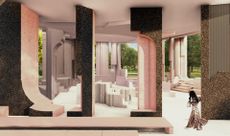 Serpentine Pavilion commission extended for the first time
Serpentine Pavilion commission extended for the first timeCounterspace's anticipated Serpentine Pavillion design will now debut in summer 2021
By Elly Parsons Last updated
